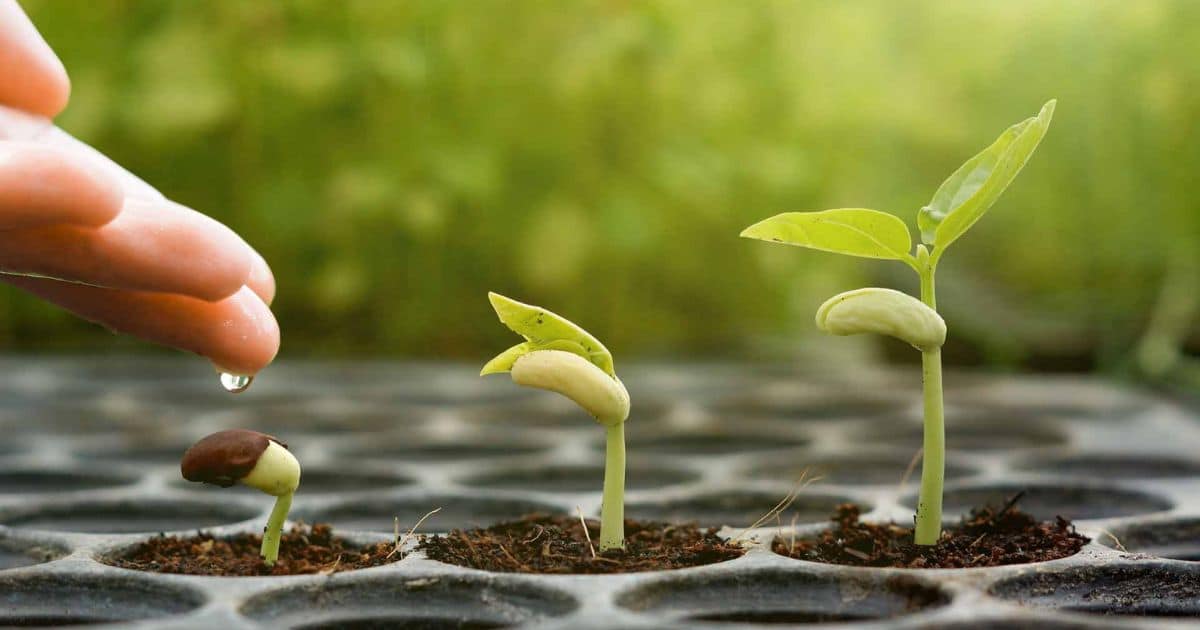Wildflowers add vibrant pops of color to gardens, meadows, and landscapes. Their low maintenance and drought tolerance make them an excellent choice. But how long does it take for these beauties to sprout and bloom? Read on to learn everything about the wildflower growth cycle.
What are Wildflowers: A Brief Overview
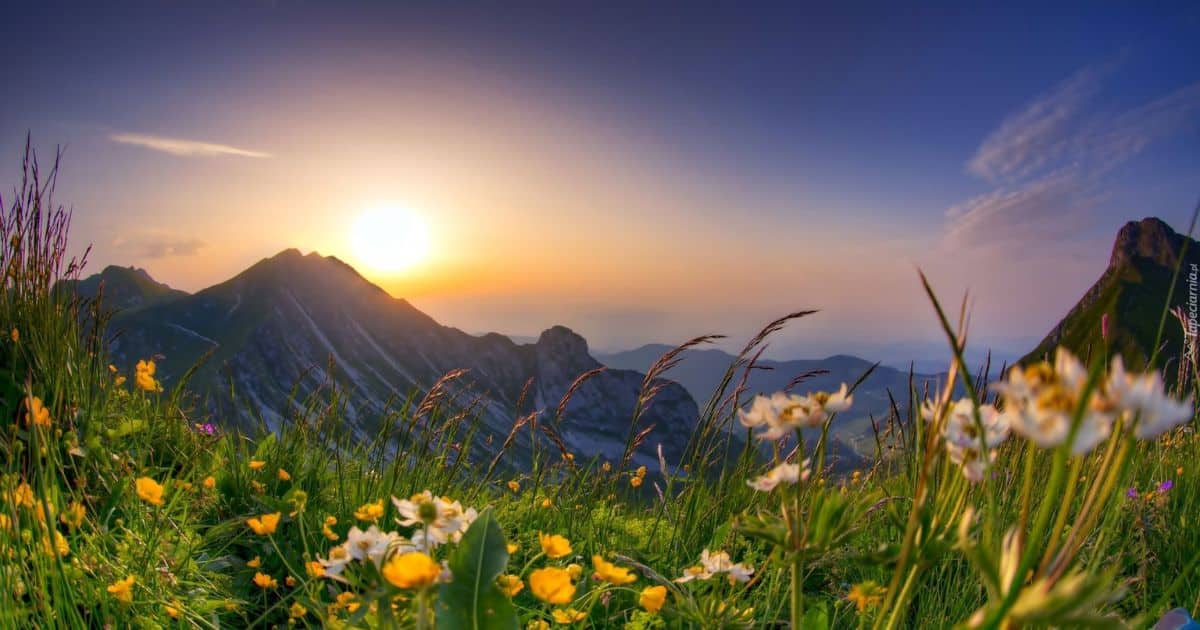
Wildflowers are flowering plants that grow without human cultivation. They can be annual, biennial, or perennial. Wildflowers thrive in the harshest terrains and require minimal care. Their deep roots help prevent soil erosion and their nectar provides food for pollinators. Wildflowers come in an array of colors and flower shapes. Popular types include cosmos, sunflowers, daisies, coneflowers, and black-eyed Susans.
Wildflowers lend a hand in sustaining biodiversity. They also beautify landscapes in an eco-friendly way. Their low maintenance makes them suitable for large spaces.
Typical Growth Cycle of Wildflowers
The wildflower growth cycle depends on whether they are annual, biennial, or perennial. Annual wildflowers complete their life cycle in one growing season. They sprout from seeds, mature, flower, set seed, and die in a single year. Popular annuals include cosmos, sunflowers, zinnias, and snapdragons. Biennial wildflowers take two years to complete their life cycle. In the first year, they grow foliage and store energy in root reserves. The next year, they flower, set seeds, and die. Examples include hollyhocks, evening primrose, and foxgloves.
Perennial wildflowers live for over two years. They resprout from root systems annually and bloom at the same time each year if conditions allow. Some perennials are short-lived while others are long-lived. Common perennial wildflowers are coneflowers, asters, and black-eyed Susans.
Different Types of Wildflowers
There are hundreds of wildflower species, which are grouped into annual, biennial, and perennial categories. Here are some top choices:
Annual Wildflowers
Cosmos: Available in bright pink, white, orange, red. Blooms summer and fall.
Sunflowers: Cheery yellow flowers on tall stems. Bloom midsummer.
California poppies: Orange, red, yellow or white blooms. Thrive in poor soil.
Zinnias: Vibrant, long-lasting blooms. Available in rainbow colors.
Snapdragons: Spiky blooms on long stems in pink, red, yellow, white.
Perennial Wildflowers
Coneflowers: Purple blooms with brown cones. Tolerates heat and drought.
Asters: Showy daisy-like flowers in purple, pink, white, blue. Bloom in fall.
Black-eyed Susans: Yellow flowers with black centers. A prairie staple.
Yarrow: Flat-topped white or pink flower clusters. Long blooming season.
Coreopsis: Cheery yellow blooms. Tolerates poor, sandy soil.
Factors That Influence Wildflower Growth
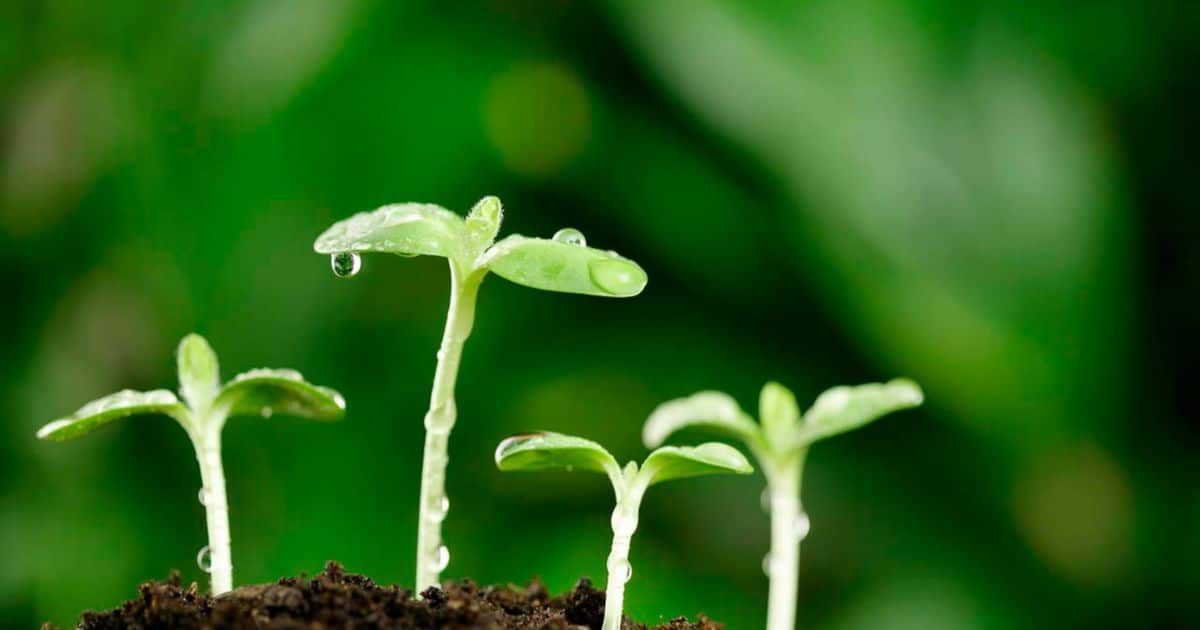
Several elements impact how quickly wildflowers sprout and grow. Key factors include:
Climate and Location: Wildflowers thrive in regions with suitable temperature, sunlight, and rainfall. Cooler climates often have shorter bloom seasons.
Soil: Most wildflowers grow in poor to average soil and cannot tolerate wet, clay soil. Well-draining loam soil is ideal.
Sun Exposure: Most wildflowers need full sun (6+ hours per day). Part-sun also works for some shade-tolerant varieties.
Water: Once established, wildflowers are quite drought tolerant. But they need adequate moisture while sprouting and growing.
Weather: Temperature, sunlight and precipitation affect growth rate. Cool, cloudy weather slows development.
Maintenance: Weeding, thinning, deadheading and fertilizing (if needed) helps wildflowers flourish.
Seed Quality: Viable, fresh seed tends to sprout more readily. Store seeds properly to maintain vigor.
How to Speed Up Wildflower Growth
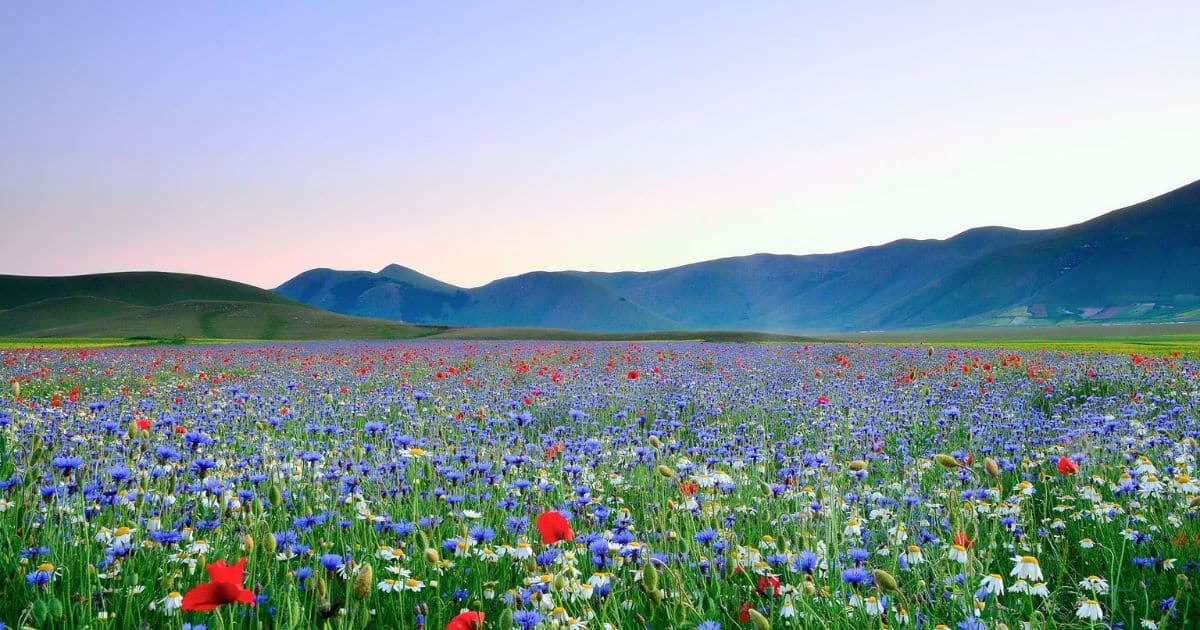
Here are some tips to accelerate wildflower growth:
Start seeds indoors 6-8 weeks before transplanting outside after the last spring frost. Use a seed starting mix and grow lights. Harden off before transplanting. Direct sow seeds in fall or early spring when soil temperatures reach 60-70°F. Spring planting may bloom faster. Prepare soil by loosening, removing weeds/debris, and mixing in compost if needed. Rake soil smooth before sowing. Water thoroughly after sowing and keep soil moist until sprouts emerge. Water established plants during drought.
For direct sowing, choose quick sprouting annuals like cosmos, zinnias, calendula, sunflowers. Pick fast growing varieties suited for your zone. Also select short season types that bloom quickly. Give wildflowers their preferred sun exposure. Morning sun is adequate for partial sun species. Weed regularly so wildflowers don’t compete for light, space and soil nutrients. Deadhead blooms to prolong flowering. Prune periodically to encourage new growth. Apply organic wildflower fertilizer at planting and midseason for an extra growth boost.
Wildflower, Perennial & Annual Flower Seed Kit | 35 Variety Pack
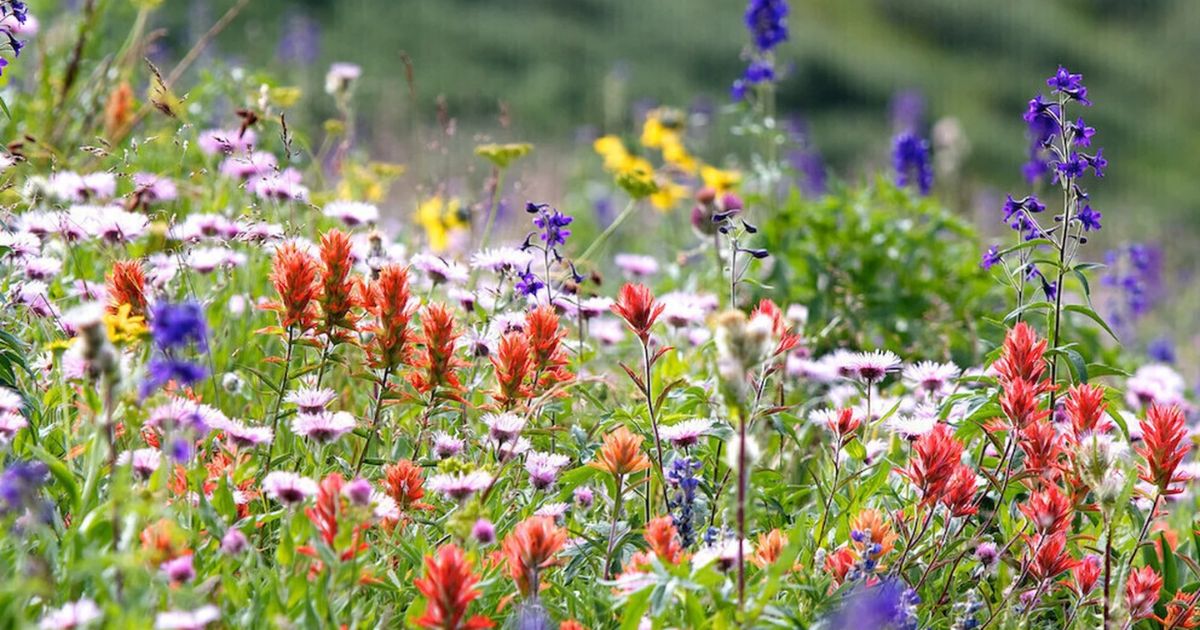
For gorgeous wildflowers with staggered bloom times, a mixed seed kit is ideal. This kit from Outsidepride contains 35 varieties of annuals, perennials and wildflowers for zones 3-10. It includes popular types like coneflowers, cosmos, foxglove, sunflowers, poppies, daisies, verbena, asters, primrose, larkspur, black-eyed Susans and more. The mix creates a habitat that attracts pollinators with season-long color.
With diverse species, at least one wildflower is always in bloom. The kit covers 150 sq. ft and includes planting instructions. Fast-growing annuals provide first-year color while perennials establish root systems. It’s perfect for cottage gardens, meadows, prairie landscaping, borders and cutting gardens.
When to Plant Wildflowers
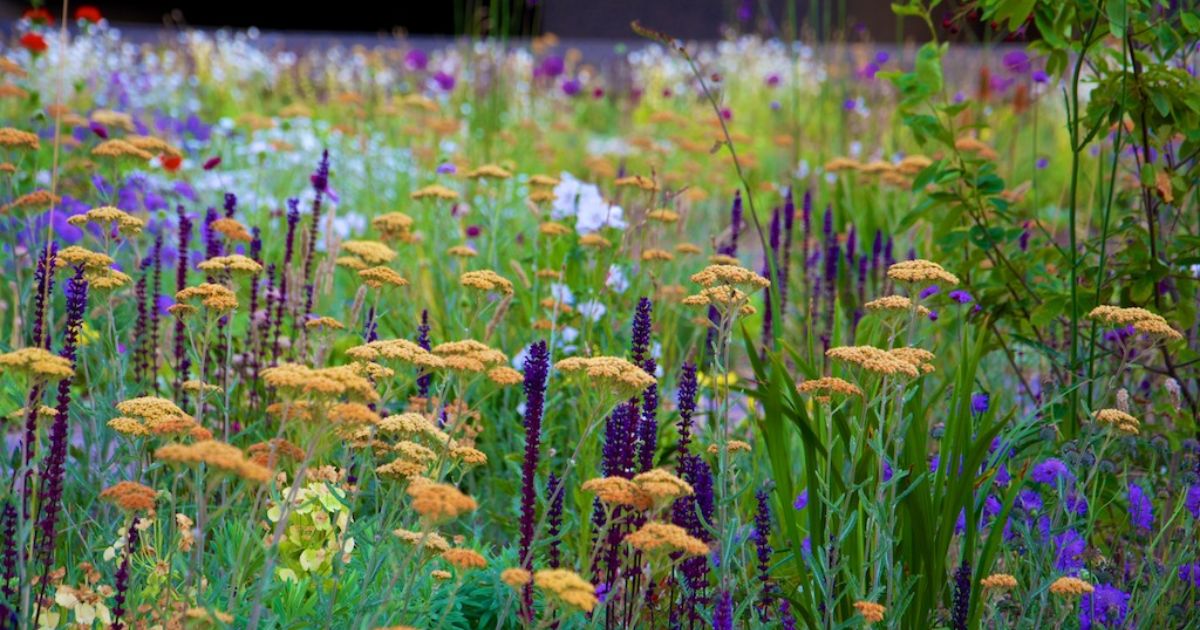
Timing is key when sowing wildflower seeds. Here are suitable planting periods: Fall: Sow seeds from late summer to early fall for growth and spring/summer blooms. Avoid early fall planting in cold climates. Early spring: Sow seeds once soil thaws and overnight temperatures remain above freezing. This yields summer color. Late spring: Sow heat-tolerant annuals in late spring for late summer/fall flowers. Early summer: Plant warm season annuals like sunflowers, zinnias, cosmos in early summer for late summer color. Always check seed packets for recommended planting times. Adjust for your region and weather conditions.
How to Grow Wildflowers
Follow these simple tips for successfully growing wildflowers from seed:
Ideal Growing Conditions for Wildflowers
- Full sun to part sun exposure
- Average to poor, well-draining soil
- Moderate water, drought tolerant when established
- Appropriate planting time for your climate
Tips for Sowing Wildflower Seed
- Prepare soil by removing weeds, debris, and break up clumps. Work compost into soil if needed.
- Rake soil smooth and sow seeds according to packet directions. Most are sprinkled on top of soil.
- Lightly cover smaller seeds with 1/4 inch soil. Gently press larger seeds into soil.
- Water thoroughly after planting. Keep soil moist until seedlings emerge.
- Use row covers to protect young sprouts and reduce weed growth.
- Thin seedlings 8-12 inches apart when 2-4 inches tall.
What to Expect: From Seed to Bloom
Here’s an overview of the wildflower lifecycle from seed to first bloom:
Days 1-14: Seeds germinate and sprout. Growth slows in cool conditions.
Weeks 3-8: Seedlings establish root systems and grow leaves. Develops buds.
Weeks 9-12: Buds mature and open into full blooms. Annuals bloom within two months of sprouting.
Early bloomers: Some wildflowers like California poppies take 4-6 weeks from seed to bloom.
Later bloomers: Perennials and biennials like coneflowers can take up to 4 months to bloom.
Ongoing color: Deadheading spent flowers promotes rebloom. Staggered planting provides continuous blossoms.
FAQ’s
What’s the best time to plant wildflower seeds?
Early spring or early fall when temperatures are milder gives seeds time to establish before hot weather.
Do wildflowers need a lot of water?
Wildflowers are drought-tolerant once established but regular watering is important when first seeding or planting to keep the soil moist until germination and initial growth.
How do I know if my soil is suitable for growing wildflowers?
Test your soil’s pH, nitrogen, and potassium levels – most wildflowers thrive in neutral to slightly acidic, loose, well-draining soil rich in organic matter like compost.
Conclusion
Wildflowers bring dynamic, carefree color to gardens when provided with suitable growing conditions. Understanding their ideal planting time, sunlight, soil and water needs helps ensure success. While wildflower growth rate depends on climate and species, most sprout within 1-2 weeks and bloom within 1-4 months. Stagger planting annuals, biennials and perennials for non-stop blossoms. Avoid overwatering, fertilize lightly if needed, and remove weeds for healthy growth. With their resilience and drought tolerance, wildflowers deliver natural beauty year after year with minimal upkeep. Simply scatter their seeds and let their vibrant hues brighten your landscape.
